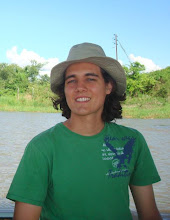
The public transport in Malawi is something very singular. There isn't bus to go to city centre or any where in the city. If you want use public transport you should take a “mini bus” that is like a van. The conditions of a minibus isn't nice because most of them are very old and they don't care so much about maintenance. So you can easily find minibuses with the front glass cracked, without rear view mirrors, holes on the car floor, wreckers everywhere, broken speedometer and much more that you can discover when you get in a mini bus. People can bring almost everything that they need to carry with them, like big bale of clothes, hoes, bags of maize or flour, baskets with bananas, and animals like chickens and fishes, but these ones they carry outside trough the window or tied somewhere out of the car.
 Another singular issue about minibuses is the overcrowding. They only start the journey from the bus station if the car is full. A normal minibus has 15 places to seat including passengers, driver and man to collect money. But they like to put inside it many people as they want to. Once I was on a minibus with 21 people! The price from my house to city centre is K80 (US$0.53) but some times you can negotiate the price it depends from where you get the minibus. To get a minibus you don't need to worry in go until the bus stop because you can get anywhere that is possible they stop or they will go until you. It's common when I'm going down the street near my house and a minibus is crossing the street when they see me they turn the street just to ask if I need to get inside.
Another singular issue about minibuses is the overcrowding. They only start the journey from the bus station if the car is full. A normal minibus has 15 places to seat including passengers, driver and man to collect money. But they like to put inside it many people as they want to. Once I was on a minibus with 21 people! The price from my house to city centre is K80 (US$0.53) but some times you can negotiate the price it depends from where you get the minibus. To get a minibus you don't need to worry in go until the bus stop because you can get anywhere that is possible they stop or they will go until you. It's common when I'm going down the street near my house and a minibus is crossing the street when they see me they turn the street just to ask if I need to get inside.



























